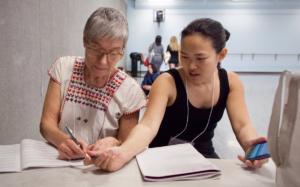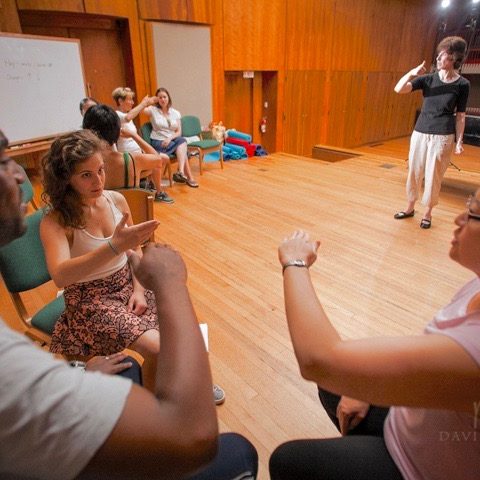The Dalcroze Practice
Take a deeper dive into the principles, philosophy, strategies, and techniques of Dalcroze education.
Dalcroze education is an interactive process that develops skills in keen listening, music literacy, analysis, performance, improvisation, composition, and pedagogy. It is the combination of music, improvisation, and discovery-based, experiential learning that makes this work joyful, inspiring, and profound.
 There are many ways and means of accomplishing these ideas while upholding the principles of a Dalcroze education and utilizing Dalcroze techniques and strategies. Activities used in the Dalcroze classroom involve varied forms and structures. Each Dalcroze teacher develops a unique style of teaching.
There are many ways and means of accomplishing these ideas while upholding the principles of a Dalcroze education and utilizing Dalcroze techniques and strategies. Activities used in the Dalcroze classroom involve varied forms and structures. Each Dalcroze teacher develops a unique style of teaching.
Typically the Dalcroze educator engages students to discover concepts through kinesthetic experience before addressing the subject in theoretical or written form. This experience involves improvisation, which is a way for students to “play with” and internalize a subject, making it their own. Students cannot expect to gain a Dalcroze education from a book or video alone; they must experience this type of education in the classroom.
The Dalcroze educator specializes in music and movement relationships. These relationships can be applied to a variety of disciplines: music performance, music education, music therapy, dance, dramatic arts, and general education, among others. Learning through experience, discovery, and feeling is a hallmark of Dalcroze education. Dalcroze education embraces life-long learning and can be applied to students of all ages and levels.
Dalcroze is a student centered approach. The teacher is a guide, leading students to discovery by problem solving.
Virginia Hoge Mead, a prominent Dalcroze educator and author, cites four basic premises that encapsulate the philosophy of Dalcroze education:
- Eurhythmics awakens the physical, aural, and visual images of music in the mind.
- Solfège (sight-singing and ear-training), improvisation, and purposeful movement together work to improve expressive musicality and enhance intellectual understanding.
- Music may be experienced through speech, gesture, and movement. These can likewise be experienced in time, space, and energy.
- Humans learn best when learning through multiple senses. Music should be taught through tactile, the kinesthetic, the aural, and the visual senses.
Further Reading
• Video: Capriccio appassionato from 3 Morceaux, Op. 46 (Alex Marthaler)

